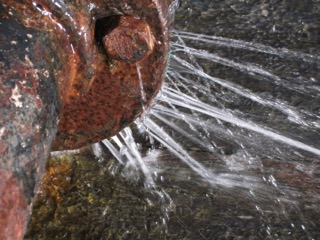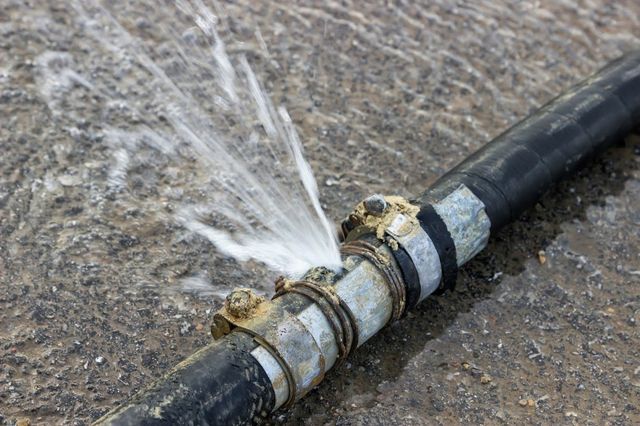What're your thoughts with regards to Water Damage Restoration Do’s And Don’t?

What should you do if a pipes bursts in your residence, developing a mini-waterfall as well as flooding an area of your residence? In this situation, you should act fast. The longer you wait, the more severe the water damage in your home. When an emergency like this happens, clearheadedness is vital. For these factors, you need to learn what to in case of a ruptured pipes. Since time is of the essence, examine out the adhering to suggestions below to aid you act quick.
Shut down the Main Waterline Shutoff
The first thing you need to do is close the shut-off shutoff. Search for the local shut-off shutoff to turn-off water in one particular location only. You have to turn-off the primary waterline valve if you do not know where the local shut-off valve to the component is. This will remove the water in your entire home. Generally, the primary shutoff is found outside the house alongside the water meter. You can also locate it in the basement at an eye-level or it might be in the 1st flooring on the ground if it's not there. Generally, building contractors but the shut-off shutoff in the main ground degree restroom or best beside it.
Call Water Damages Restoration Pros for Help
After shutting the water source, call the pros for assistance. Since they require to deal with the pipes as well as resolve the damages to your residential property, this is not something you can easily Do it yourself. Look for aid from a reliable business using 24/7 emergency solutions. With their professional assistance, you can alleviate worsening due to the fact that water can leak with your points causing deformed walls, loosened ceramic tiles, or damages framework. Do not take this problem lightly as well as look for career advice for complete peace of mind.
Paper the Damages For Insurance policy
As you are waiting for the pros to arrive, document the damage caused by the errant pipe. Take pictures and videos of whatever. Do closeup shots of belongings. These things will function as evidence for your property owner's insurance coverage. Staying positive with this enables you to file a claim for coverage, which will help you and your family get back on your feet.
Salvage Things That Can Be Conserved
Browse the items and also take out the most crucial ones from the stack as soon as you're done taking images. Dry them off and also try to preserve as high as you can. Drag them far from moisture so they can begin to dry.
Begin the Drying Process
Ultimately, while waiting on the pros, you can begin the drying out procedure. Thankfully, water from your waterlines are tidy so you don't have to bother with drain water. The moving water may have interrupted the dust and particles in your carpets and also floorboards. So be prepared with handwear covers as you use pails to discard out the water. Blot out as a lot as you can with old towels. You can additionally switch on an electric follower or open home windows to promote air blood circulation. This will certainly hasten drying out as well as hinder mold and mold growth.
Professionals are the only ones certified to fix the burs pipelines and also subsequent damages. You will typically see red flags like gurgling paint, weird sounds in the plumbing, musty odor, caving ceiling, peeling off wallpaper, or water stains.
What should you do if a water pipeline bursts in your residence, producing a mini-waterfall and also flooding an area of your residence? For these reasons, you need to discover what to in instance of a burst water pipe. After closing the water resource, call the pros for help. With their professional aid, you can minimize exacerbation since water can permeate through your things resulting in distorted walls, loosened floor tiles, or damage structure. Luckily, water from your waterlines are tidy so you do not have to worry regarding drain water.
BROKEN WATER PIPES: COST TO REPLACE & WAYS TO FIX A PIPE
CAUSES OF A BROKEN WATER PIPE
A water pipe can break for several reasons depending on the environment you live in, type of pipe, and circumstances.
The most common cause of broken pipes is freezing. If you live in a colder climate, this could happen. When water freezes it increases in volume by 9% and the pressure in the pipes can go from 40 psi to 40,000 psi. Clearly, this could be detrimental to the pipes. Water freezing causes quick expansion, which puts stress on the pipes and could lead them to crack or weaken. When water thaws, it will leak out the cracks. Other changes in water pressure can also cause breakage. Another common cause of broken water pipes is age.
Depending on the material, water pipes can last anywhere from 70-100 years. But the older they get, the more susceptible they are to weakening and corroding. Older pipes coming into contact with another material could speed up the corrosion process as well. PVC pipes can become brittle with age, while copper is prone to corrosion and stress over time. Something that could also potentially break water pipes is when they move. They may move from construction or the house settling. Moving can stress the fixed pipe which may lead to a leak or burst pipe.
HOW MUCH WATER COULD LEAK INTO YOUR HOUSE FROM A BROKEN PIPE?
The amount of water that leaks depend on how big the break in a pipe is. If it is just a minor crack, water will slowly leak out. This isn’t as serious as a full broken pipe, but it can still cause significant damage to your home. Burst pipes can leak up to 10 gallons of water per minute. The amount of water leaked also depends on what appliance is involved. The water line to your refrigerator can leak ½ to 1 gallon per minute depending on water pressure. One toilet supply line may leak 2-3 gallons a minute and a washing machine hose will leak up to 10-12 gallons per minute.
TURN THE WATER OFF
Doing this first is imperative; everything else can wait. You need to deactivate the water supply to stop the flow of water and prevent more water from leaking into your home. Shutting off the water could potentially save you thousands in water damage repairs. Locating the water shutoff valve depends on the climate you live in. For colder climates, the valves are usually inside, such as in the basement. For houses in milder weather, the shutoff valves will probably be outside—either attached to an exterior wall or in an underground box with a removable lid.
OPEN A FAUCET
The next thing to do is to open a faucet or turn on a sink. This will relieve any remaining water pressure in the pipes and ensure a full-shut down.
GET RID OF THE WATER
The quicker you get rid of the water, the less water damage and mold there could be. Use a mop and a shop vacuum to help get clean up the water. Use towels to dry everything the best you can.
CUT AND REMOVE THE DAMAGED PIPE
Once you have shut off the water and drained the damaged water pipe, you can begin to fix the issue. Cut out the damaged section of the pipe with a pipe cutter, ensuring that you also cut one inch extra on each side of the damage. Once you get rid of the broken part of the pipe, you may begin repairs.
https://www.wmhendersoninc.com/blog/broken-water-pipes-cost-to-replace-ways-to-fix-a-pipe/

I was shown that editorial on Water Damage Restoration Do’s And Don’t through an acquaintance on a different web page. Sharing is good. Helping others is fun. Many thanks for your time. Kindly come by our website back soon.